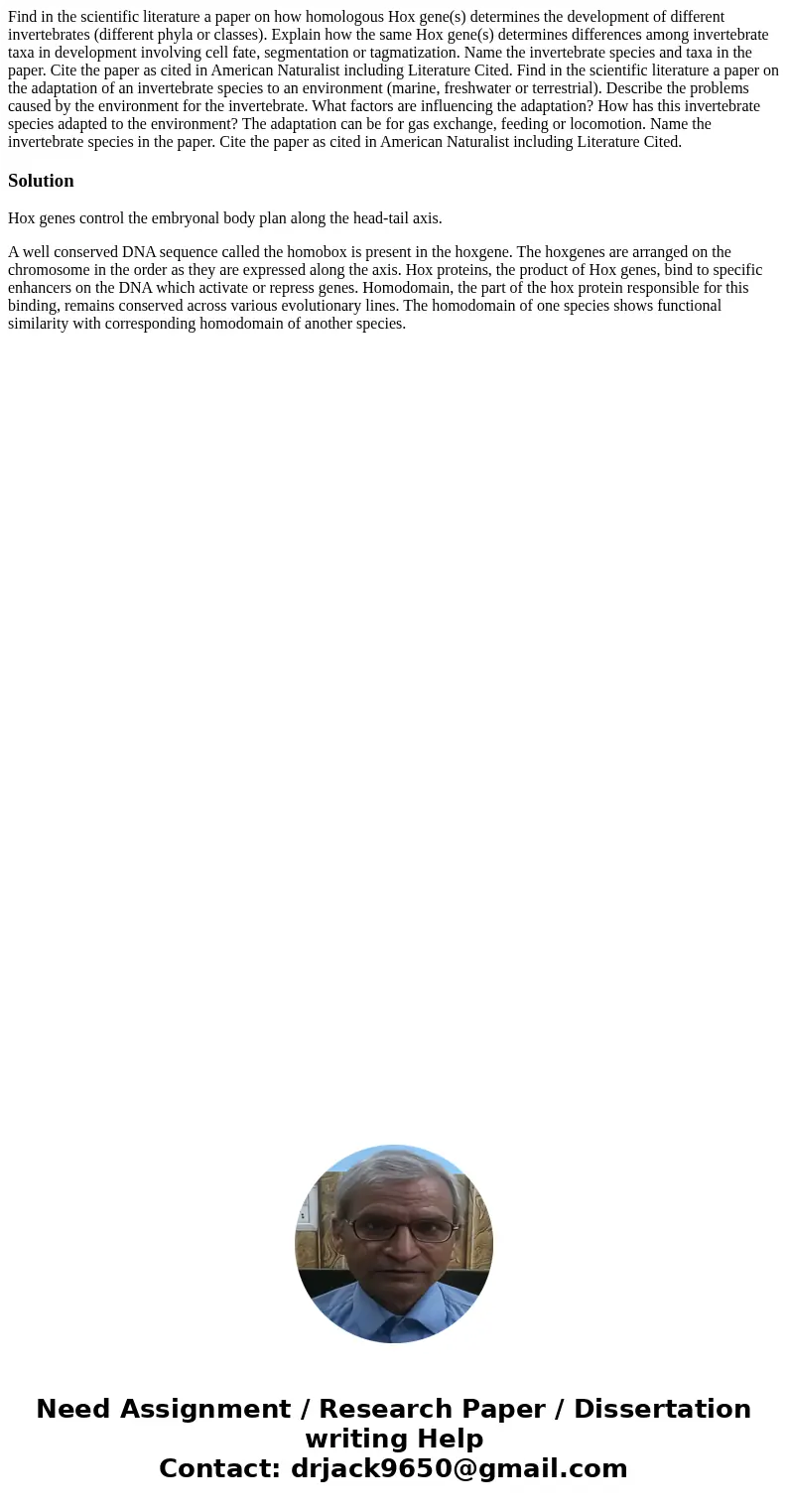Find in the scientific literature a paper on how homologous
Find in the scientific literature a paper on how homologous Hox gene(s) determines the development of different invertebrates (different phyla or classes). Explain how the same Hox gene(s) determines differences among invertebrate taxa in development involving cell fate, segmentation or tagmatization. Name the invertebrate species and taxa in the paper. Cite the paper as cited in American Naturalist including Literature Cited. Find in the scientific literature a paper on the adaptation of an invertebrate species to an environment (marine, freshwater or terrestrial). Describe the problems caused by the environment for the invertebrate. What factors are influencing the adaptation? How has this invertebrate species adapted to the environment? The adaptation can be for gas exchange, feeding or locomotion. Name the invertebrate species in the paper. Cite the paper as cited in American Naturalist including Literature Cited.
Solution
Hox genes control the embryonal body plan along the head-tail axis.
A well conserved DNA sequence called the homobox is present in the hoxgene. The hoxgenes are arranged on the chromosome in the order as they are expressed along the axis. Hox proteins, the product of Hox genes, bind to specific enhancers on the DNA which activate or repress genes. Homodomain, the part of the hox protein responsible for this binding, remains conserved across various evolutionary lines. The homodomain of one species shows functional similarity with corresponding homodomain of another species.

 Homework Sourse
Homework Sourse